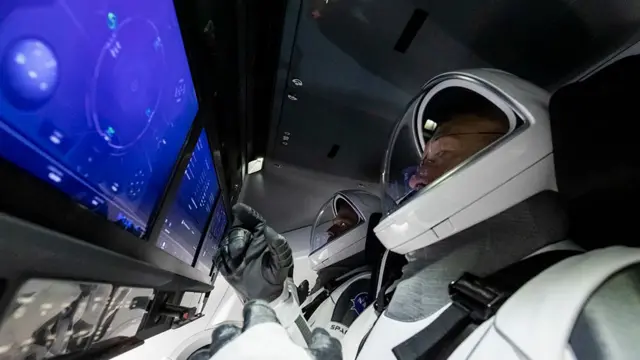Heavy skies over the Capepublished at 18:06 BST 27 May 2020
There's been a lot of rain at Kennedy these last few days. Everyone is watching the weather. Can they find a favourable window around launch time (16:33 local / 21:33 BST)? Remember, this is an instantaneous launch opportunity: you either go on the button or you don't. The reason for that is because the capsule has to catch the space station in the sky. If you hang around on the pad, this quickly becomes impossible. It all comes down to timing.
 Image source, NASA
Image source, NASA














